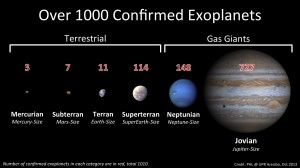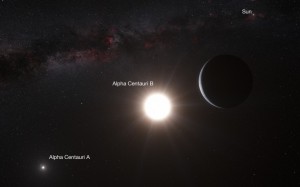A planetary system around our nearest star, beyond our own Sun, is emerging.
That’s the stellar forecast that suggests scientists are getting closer to discovering Earth-like planets close to Earth.
Word is that “superhabitable” worlds must be considered for future follow-up observations of signs of extraterrestrial life. These worlds offer more benign environments to life than Earth does.
This view is being championed by Rene´ Heller of the Department of Physics and Astronomy, McMaster University, Hamilton, Ontario, Canada and John Armstrong, Department of Physics, Weber State University, Ogden, Utah.
Ideal target
Writing in a new issue of Astrobiology, they center on Alpha Centauri B — a member of the closest stellar system to the Sun – a locale that is supposed to host an Earth-mass planet.
That makes it an ideal target for searches for a superhabitable world, Heller and Armstrong suggest.
“Though our considerations are anticipatory, they still rely on the assumption that life needs liquid water,” Heller and Armstrong write.
Principle of mediocracy
The scientists note that the “principle of mediocracy” cannot be used to logically explain why Earth should be a particularly habitable planet or why other inhabited worlds should be Earth-like.
In their hypothesis article in Astrobiology, Heller and Armstrong illustrate how tidal heating can render terrestrial or icy worlds habitable beyond the stellar habitable zone.
“Eventually, just as the Solar System turned out to be everything but typical for planetary systems, Earth could turn out to be everything but typical for a habitable or, ultimately, an inhabited world,” they conclude.
“In our view, a variety of processes exist that can make environmental conditions on a planet or moon more benign to life than is the case on Earth.”
An upshot of their work is possible good news for interstellar travel fans. That is, a delicious destination – a mere 4.3 light years away — may not be all that far away for adventurous stellar sailors.
For more details, go to:
http://online.liebertpub.com/doi/pdf/10.1089/ast.2013.1088
By Leonard David


